Subtotal: $
Checkout
The Way
Two Millennia of Christian Community
By Alden Bass
June 8, 2018
Available languages: Español
Next Article:
The history of committed Christian community is a story of roads. The first followers of Jesus called themselves “the Way,” a name that echoes Jewish halakha, the “way of life” enshrined in the Torah, as well as the disciples’ belief that Jesus was “the way” to God the Father.
The earliest community that formed in Jerusalem after Jesus’ execution was composed of the original disciples and pilgrims who had traveled to Jerusalem to celebrate the holy days. United by the conviction that Jesus’ resurrection was a sign of covenant renewal and the new creation, these Jews marched through the Red Sea of baptism into a radically new way of life, one in which all possessions were held in common, there were no needy persons, and all members were “of one heart and mind.” The spirit of ancient Israel engulfed the Holy City, and for a brief period of time the utopian community of the Jubilee was reconstituted.
Eventually, war drove all the Christians and Jews from the land. Still, the traces of that original movement were so impressed in their memory that the disciples who fled Jerusalem continued to establish countercultural communities of economic sharing, scripture study, participatory worship, and service to the poor.
These first Christians wended the path pioneered by Jesus. They were not the only people to live intentionally; in the early centuries of the Common Era there were other fraternal associations of mutual aid, organized by profession, religious devotion, or simply voluntary adherence. Christian communities differed from them, as Tertullian observed in the third century, in their charity to the underserved (Apology 39.5–6). Groups of Christians organized themselves into economic communities called parishes, a word derived from the Greek paroikia, which meant “neighbor” but also “sojourner” or “pilgrim.” So, just as “parish” is similar to “pariah” in English, the name would have reminded Christians they were outcasts and exiles in a foreign land.
Palestinian roads were treacherous, consisting of packed earthen pathways, usually narrow and winding around the many mountains in the region. Persecution forced whole families of Christians to follow these dusty trails to new cities, where they formed tightly knit communities of a few dozen people. In times of difficulty, Christians relied on one another for basic needs. For instance, if Christians were imprisoned, they counted on the community to bring them food and care for them. Such pressures bound the parish together into a family unit, sometimes called “the household of faith.”
The development of Roman highways – between eight and thirty feet wide; built in courses of gravel, sand, and pavement; engineered to efficiently drain water away – not only made life easier but also aided the spread of Christianity throughout the empire. As external pressures relaxed, Christians’ dependence on one another likewise waned. By the end of the third century, the parish had morphed from a countercultural community into an administrative jurisdiction of the institutional church. This shift occurred at different rates in different regions, but by the end of the fourth century Christianity was the official religion of the Roman Empire and firmly established in major urban areas. From this point until the modern period, Christians in Europe would live in tension between a supposedly “Christian” society and the communal ideal of the early church.
Already a subscriber? Sign in
Try 3 months of unlimited access. Start your FREE TRIAL today. Cancel anytime.
The Birth of Monasticism
Ironically, one man credited with the renewal of Christian community spent most of his life living as a hermit in the Egyptian desert. Anthony was born in 250 to an affluent family in Lower Egypt. His parents died while he was young, and Anthony received a significant inheritance. One day, entering a church just as the gospel was being read, he heard the lector say: “If anyone would be perfect, go, sell what you have, and give it to the poor, and you will have treasure in heaven; and come, follow me.” Immediately Anthony sold his possessions and distributed the money to the poor. He lived as an outcast on the margins of the village, seeking God alone in the wilderness. For twenty years, he prepared the way of the Lord through prayer, fasting, and vigils. As his reputation grew, others followed him down the deserted highway into the wilderness, settling in individual cells near him. These pilgrims were called “monks,” from the Greek monos, which means “alone.”
Although Christianity was now accepted throughout the empire, some Christians believed the faith to be weakened, diluted by its social respectability and assimilated to prevailing cultural norms. Inspired by Anthony’s example to recover the original vision of Jesus’ followers, many divested themselves of property and worldly concerns, leaving even the security of marriage to pursue a simple life of prayer and manual labor. For them, commitment to God was not a matter of words (they spoke few) but of action. They eschewed luxury in all forms, preferring simple food, plain dress, and basic shelter. They even surrendered their autonomy by submitting themselves to the oversight of a spiritual elder called an abbot (from abba, “father”). These decisions eventually evolved into the three monastic vows of poverty, chastity, and obedience.
The “way of the Lord” was soon jammed with traffic as waves of would-be monks entered the deserts of Egypt, Syria, and Palestine. The men began to join together in large colonies, meeting occasionally for prayer and communion. This common life was given form by Pachomius, who organized the monks into communal houses under the leadership of an elder. The men ate together, held their goods in common, and followed a common order of communal prayer, manual labor, and later, bible study. Their way of life was called cenobitic, from the Greek koinos biosi, “common life.” Within a few years, Pachomius had three thousand followers, and by the mid-fourth century there were several men’s houses and, situated on the other side of the Nile, at least one house for women. After Pachomius died his followers wrote down his communal rules, which were published in Latin by Jerome and became well known, the first of many such communal covenants.
At the time, most of the monks who left the city for the desert were uneducated laymen dissatisfied with the worldliness of the church. Basil of Caesarea, a well-educated nobleman from Cappadocia, was an exception. He attempted to incorporate monastic principles in an urban setting under the guidance of church leaders. He wrote his own Rule and established a community at his family’s estate near the Black Sea. His goal was to balance the individualism and personal holiness of the desert monks with Jesus’ call to engage the world with acts of justice and mercy. To that end, Basil built one of the world’s first hospitals in his community, a place to offer hospitality especially to those who could not afford medical care. The hospital was an integral part of the intentional community, which was named the Basiliad after its founder. Physicians and nurses lived on the grounds, as did students studying at the attached medical school. The complex also included space to host travelers and to provide education. Basil’s Rules remain the basis for monastic life in the Orthodox churches of Turkey, Greece, Syria, and Russia.
Until the fourth century, communal activity was concentrated in the east, but eventually all roads lead to Rome. Monastic ideals arrived by way of travelers from Egypt and Syria and through stories being published about the monks. John Cassian lived among the eastern monks for years, then wrote several influential books in Latin about what he had learned. His audience was a new generation of urban Christians forming communities in cities across Europe. Many [including a number of aristocratic Roman women,] were inspired to retread the Palestinian roads Jesus had walked. Under the guidance of Jerome, this circle of heiresses adopted a life of simplicity, common prayer, fasting, and charitable works. One of the women, Melania the Elder, moved to Jerusalem in 378 and led a community of about fifty women on the Mount of Olives. Many of these women took vows of celibacy and devoted themselves to biblical study. Another community was established at Bethlehem. Back in Italy, the bishop Ambrose formulated policies for the many young women who wanted to live out the gospel around Milan.
Like Basil, the French bishop Caesarius of Arles believed that monastic ideals should be integrated into the life of the parish church. Caesarius preached hundreds of sermons to his congregation on prayer, fasting, chastity, compassion, and social justice throughout the fifth century. He exhorted all the Christians in the twenty-five or so rural parishes of his diocese to practice mutual love and responsibility for one another – to be communities. His sermons continued to circulate for centuries after his death, inspiring generations of Christians to live out radical Christian values in their everyday lives.
Outside of the New Testament, perhaps no text has been as important to the development of Christian community as the Rule of Benedict, written in the early sixth century and shaped by the writings of John Cassian and the anonymously written Rule of the Master. Benedict, a Roman nobleman, left Rome for the countryside, where he established several monastic communities. Everyone in the community shared the responsibilities of tending the farm and the kitchen. Work was punctuated eight times each day by common prayer called “the hours.” Benedict’s vision for common life – which integrated work and prayer, solitude and community, personal responsibility and authority – was extraordinarily successful, and remained the paradigm for Christian communities for well over a millennium. His emphasis on stability and fidelity to a particular locality would become hallmarks of intentional Christian community.
As the roads of the crumbling empire fell into disrepair, the monasteries became isolated, scattered outposts. The monks were fantastically successful – erudite and wealthy – but they lost themselves in contemplation. The monastic life of prayer and study became professionalized and the way of simplicity and manual labor was eventually lost. Caricatures of fat monks began to appear in this period. A series of reforms in the Middle Ages struggled to recover Benedict’s original vision, first the Cluniac reforms in the tenth century, then the Carthusians in the eleventh. The Cistercians likewise attempted to restore the simplicity of the original Benedictine spirit: they made time for more manual labor, stripped their chapels of rich art and décor, and adopted a simple worship style. Much later, the Trappists would re-reform the Cistercians, adding their own emphasis on silence.
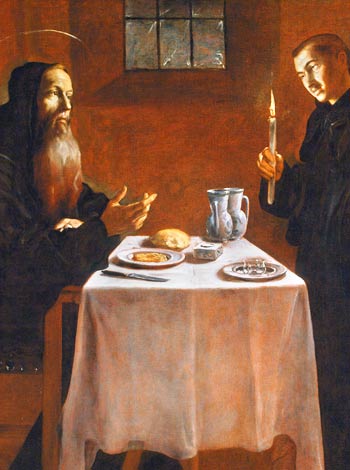 Juan Rizi, Saint Benedict at Table (detail).
Juan Rizi, Saint Benedict at Table (detail).
Already a subscriber? Sign in
Try 3 months of unlimited access. Start your FREE TRIAL today. Cancel anytime.
Evangelical Communities of the Middle Ages
Despite these reforms, the monasteries could not contain the radical impulse of Christianity. Europe was undergoing major social and economic change during the twelfth century, moving from a feudal, village-centered society to an urban economy. The ancient cities, dormant since the time of Benedict, were awakening with new commerce. The Roman roads were cleared and rebuilt. Yet as trade increased, the division between rich and poor also widened. Alongside a rising urban middle-class of merchants, bankers, and lawyers grew an underclass of poor and underemployed. Beginning with monks such as Rupert of Deutz (who wrote a little treatise titled On the Truly Apostolic Life) a movement arose to restore the model of the Jerusalem community for the entire church. Others, such as Gerhoh of Reichersberg, argued that if monasticism is the pattern for the church, then all Christians should be monks of a sort: God’s call to the Christian life is universal, not limited to the cloister. The apostolic life, they said, was not simply a life of prayer and devotion but of social and economic justice. Ordinary Christians should reconcile economic divisions through solidarity with the poor, banding together with those marginalized by the new economy through fraternal charity, scripture study, voluntary poverty, and active proclamation of the faith.
This awakening led to the formation of small evangelical communities across Europe. In western France, Robert d’Abrissel gathered a diverse group of men and women, including a number of former prostitutes, into a community at Fontevrault known as Christ’s Poor. In southern France, groups of Christians known as the cathari, or “pure ones,” organized radical communities that rejected sexual relations, the eating of meat, and hierarchical authority. The Cathars were regarded as heretics because of their denigration of the material creation, and were relentlessly persecuted. Northern Italy produced a movement called the humiliati, or “humble ones,” in which both clerics and laypeople attempted to conform their lives to the gospel call to simplicity. The movement included both celibate and married people, many of whom were drawn from the thriving garment industry in the area. Though the communities produced rich cloth in the textile industry, they wore only plain, undyed clothes. They refrained from political engagement, served the disadvantaged, and prayed the Benedictine hours. By the end of the thirteenth century, there were communities of Humiliati in most cities in northern Italy.
In southern France, a wealthy merchant named Peter Waldo led a similar movement. In a story not unlike Anthony’s, Waldo gave up his business, made reparation for his dishonest dealings, and began distributing bread in the streets of Lyons. Others followed his example of poverty and commitment to studying the Bible, and they became known as the Poor Men of Lyons. The “Waldensian” movement spread quickly to Germany and Italy, where it eventually merged with the Humiliati. Small communes formed which engaged in common work and gospel preaching; some remain to this day.
Saint Francis became the most famous exemplar of the apostolic life. Like so many earlier community leaders, Francis was a scion of aristocrats, who relinquished all his wealth, even the clothes on his back (he literally went naked for a time). Exchanging rich silk garb for a rough woolen habit, Francis and his friends traipsed across Europe preaching and exhorting people to follow Jesus’ way. Before long the roads of medieval Europe were clogged with tens of thousands of friars singing, preaching, and begging for daily bread. The Franciscan movement spread throughout the continent, spilling over into North Africa and the Middle East, where friars initiated some of the first interfaith conversations with Muslims. Besides celibate communities of men and women, confraternities of married people who vowed to follow the simple way of the gospel grew up in major cities.
Farther north, in what is now Belgium, groups of single women inspired by Francis joined together to form communities within the great urban centers of Leuven, Ghent, and Bruges. Known as Beguines, they established “towns within towns” that contained houses, workshops, churches, hospitals, and dorms for poorer members of the community. The women practiced celibacy, daily prayer, and simplicity, wearing plain beige dresses. Most worked in the Belgian textile factories, spending their extra time with the poor and sick. Unlike traditional nuns, the Beguines took no formal vows and shared no rule of life, but each woman promised obedience to the local community and the local pastor. Similar communities of men called the Beghards soon followed their lead. A little later, in the fourteenth century, the Brethren of the Common Life flourished in the Netherlands and Germany. Like the Beguines and the Beghards, the Brethren did not take formal vows. They roomed together in large houses and ministered to others by preaching (some were priests) and producing devotional literature. The most well-known example is The Imitation of Christ, by Thomas à Kempis, a book on the devotional life that has guided many people to the Way.
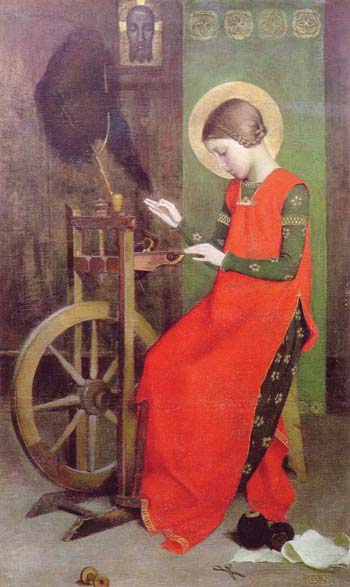 Marianne Stokes, Saint Elizabeth from Hungary, Spinning for the Poor. Elizabeth (1207–1231), a Hungarian princess, gave up her wealth to serve the poor as a member of the Third Order of Saint Francis.
Marianne Stokes, Saint Elizabeth from Hungary, Spinning for the Poor. Elizabeth (1207–1231), a Hungarian princess, gave up her wealth to serve the poor as a member of the Third Order of Saint Francis.
Already a subscriber? Sign in
Try 3 months of unlimited access. Start your FREE TRIAL today. Cancel anytime.
The (Radical) Reformation
Such movements to “monasticize” all of Christian society climaxed in the Great Reformation. The Reformers mounted a devastating critique of the “monkish” life, which was already suffering under the weight of internal problems. Luther, himself an Augustinian monk, renounced his vows, marched out of the monastery, and married a nun. Calvin likewise opposed traditional monasticism as morally and spiritually bankrupt, believing it represented a double standard for Christians – all should strive for moral perfection. Monks and nuns in reformed lands were released from their vows, and many married and joined secular life.
Meanwhile, more radical Reformers such as Michael Sattler (a former Benedictine prior) organized new apostolic communities that rejected military service and political involvement and revived the ancient practice of believer’s baptism. Among these “Anabaptists,” the Mennonites considered it a mark of the true church that there should be no poor among them. The Hutterites went further, abolishing private property altogether and practicing full economic sharing. The egalitarian spirit was manifest in the practice of calling other members “brother” and “sister”; hence some groups in Moravia and Switzerland were simply called “Brethren.” Persecuted across Europe by Catholics and Protestants alike, Anabaptist communities saw themselves as following in the footsteps of the persecuted early church.
The “age of exploration” opened the pathways of the sea and connected the world in previously unimaginable ways. Wherever Christians sojourned, intentional communities developed. Hundreds of Baptists and other dissenters left their homes in England and Scotland in order to build a Christian society in the New World. Both the Pilgrims who settled Plymouth Colony in 1620 and the Puritans who established the “Bible commonwealth” in the Massachusetts Bay Colony in 1630 attempted to create cohesive Christian communities. The Plymouth Pilgrims practiced the discipline of shared property in the first generation of their colony; all shared a high standard of moral discipline. The idealism of these founding communities directly influenced the formation of America’s distinct sense of mission and left a legacy of utopian community, both Christian and non-Christian, in the New World.
Many of these New World communities had a millenarian cast – they believed the Second Coming was at hand. The austere community of Bohemia Manor, founded in the 1680s in Pennsylvania by the followers of Jean de Labadie (the “second Calvin”), had no private property and shared common work on the estate; food and dress were plain. A few years later, the Seventh Day Baptists established a community, also in Pennsylvania, called Ephrata Cloister. Perhaps most successful were the Shakers, established right before the Revolutionary War. By the 1830s they had attracted some four thousand members to more than sixty celibate communes called “families” in nearly twenty different settlements from Maine to Indiana. One community remains, at Sabbathday Lake, Maine. Other North American communities likewise attracted thousands: German Pietists flocked to communities such as Harmony and Economy in Pennsylvania, and New Harmony in Indiana. Another German sect, the Inspirationists, built seven communal villages in Amana, Iowa, in the 1850s, which survived until the Great Depression. The largest intentional Christian communities in the New World are the Hutterites, who fled oppression in Europe and established expansive farming colonies on the western plains of the United States and Canada. Today there are around forty thousand Hutterites living in more than four hundred colonies.
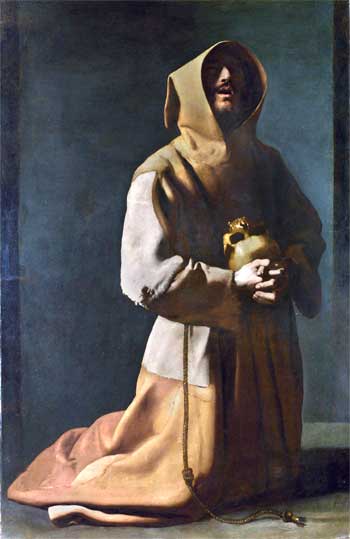 Francisco de Zurbarán, Saint Francis
Francisco de Zurbarán, Saint Francis
Already a subscriber? Sign in
Try 3 months of unlimited access. Start your FREE TRIAL today. Cancel anytime.
A Living Tradition
The twentieth century witnessed a revival of radical Christian community. Communal life focused on discipleship was seen as a way to heal the wounds left by centuries of religious strife and political turmoil. In response to the church’s complicity in war, Eberhard Arnold founded the Bruderhof community in Sannerz, Germany, in 1920. A few years later, in 1933, Dorothy Day and Peter Maurin founded the Catholic Worker, a community committed to serving the homeless poor. In 1934, Dietrich Bonhoeffer started the experimental underground Christian community in Finkenwalde, which would become the subject of his book, Life Together. In 1938, a Presbyterian pastor named George MacLeod founded the Iona Community in Scotland, in order to close the gap between middle- and working-class Christians. In 1946, Roger Schütz, known as Brother Roger, founded the Taizé Community in France as an ecumenical religious order of Catholics and Protestants. A year later, Basilea Schlink, a Lutheran, founded the Evangelical Sisterhood of Mary in Darmstadt, Germany, with a mission to repent for the Holocaust and work for reconciliation between Jews and German Christians. Around the same time, the Focolare movement was emerging in Italy, and what is now the Catholic Integrated Community began in Germany. Many charismatic and activist communities also sprang up in this period, centered on Jesus’ Sermon on the Mount and transcending old denominational lines. In the last several decades the New Friars, the New Monastics, and a plethora of similar urban and neo-Anabaptist missional endeavors in North America have blended elements of the active and contemplative traditions in an effort to incorporate God’s kingdom into everyday life.
The communities mentioned here are but a sampling of the thousands of groups of Christians who have determined to live lives of intentional discipleship in communities modeled on the Jerusalem church. The stories of many of these communities, especially those outside of Europe and North America, remain to be told. And doubtless many communities quietly serving others will remain forever unknown. Though each community’s narrative is of value in itself and worthy of remembrance, each is also a chapter in the overarching and ongoing story of Christians on the Way – a people walking many different roads with the same intention and the same destination, each group seeking to experience the presence and power of God in the shared life of community, a preparation for great communion to come.
From Called to Community
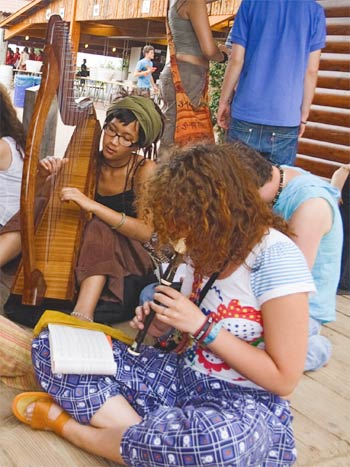 The Taizé Community, France.
The Taizé Community, France.Photograph courtesy of Maciej Biłas.
Already a subscriber? Sign in
Try 3 months of unlimited access. Start your FREE TRIAL today. Cancel anytime.





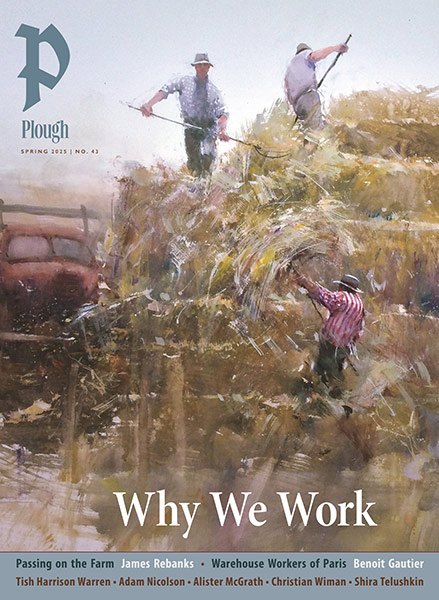
Kurt Thornbladh
I am a person who reads Marx and reads the Bible. In college, a teacher named Professor Tyree observed to me that Marx was essentially an old testament prophet. Frederick Engels showed surprisingly good Bible Scholarship is an essay entitled "Contribution to the Study of Primitive Christianity", who you can find if you search the archives at www.slp.org. Moreover I am surprised that the author omitted Saint Thomas More, the father of modern socialism, who imagined a society without greed where all could pursue virtue. I can't rid myself of the idea that democratic socialism is the system in which Christ would have us live. Another work, by a 19th Century American Protestant you might consider is Looking Backward by Edward Bellamy. LIberation Theology. A world without poverty or injustice. Life according to Jesus of Nazareth.